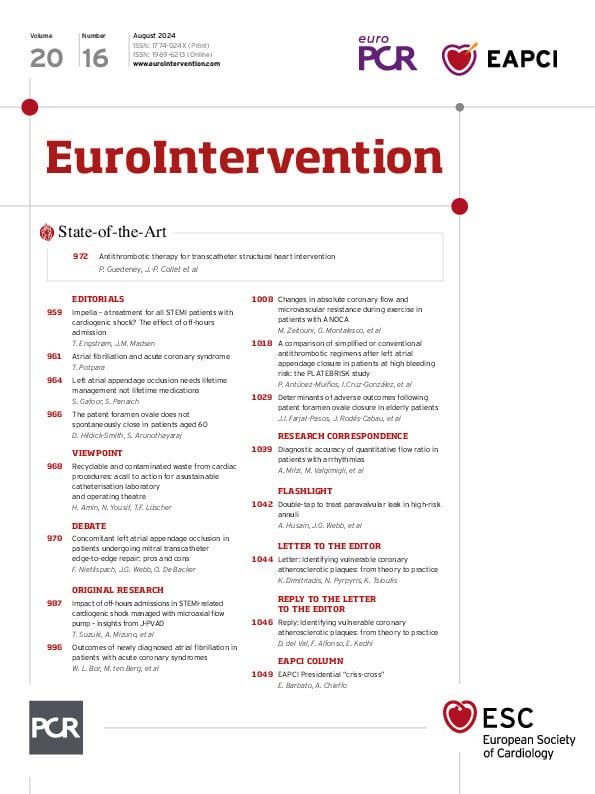We sincerely appreciate Dr Dimitriadis and colleagues’ interest in our study1, which aimed to evaluate the prognostic value of vulnerable plaque features in predicting the incidence of the lesion-oriented composite endpoint in fractional flow reserve (FFR)-negative non-culprit lesions in patients with diabetes mellitus2. The authors have rightly highlighted the demonstrated benefit of proprotein convertase subtilisin/kexin type 9 (PCSK9) inhibitors in plaque regression and stabilisation, which recent studies have associated with reduced adverse outcomes3. Although we share the authors’ enthusiasm for these potent cholesterol-lowering therapies, it is important to note that the first PCSK9 inhibitors (alirocumab and evolocumab) received European Commission approval for reducing cardiovascular risk in patients with established atherosclerotic cardiovascular disease in 2018 and 2019, respectively. However, our study analysed patients enrolled between 2015 and 2018, a period preceding the widespread use of these therapies. Currently, the COMBINE-INTERVINE randomised trial (ClinicalTrials.gov: NCT05333068) is enrolling patients and will likely include a substantial proportion of patients receiving novel low-density lipoprotein (LDL)-lowering pharmacotherapies, such as PCSK9 inhibitors and therapies based on small interfering ribonucleic acid technology. We are convinced that this ongoing trial will provide novel insights into the role of these therapies in reducing adverse events in patients with FFR-negative non-culprit lesions.
The authors suggest that clinical presentation at the index procedure could be a predictor of outcomes, which is a reasonable hypothesis. However, our study sought to determine the risk of lesion-oriented adverse events based exclusively on morphological plaque features assessed by optical coherence tomography (OCT), irrespective of clinical presentation. Nonetheless, a previous analysis of the COMBINE OCT-FFR trial demonstrated that thin-cap fibroatheroma (TCFA) and myocardial infarction at presentation were independent predictors of major adverse cardiovascular events4.
Importantly, the authors also mention the potential interplay between FFR-derived pullback pressure gradient (PPG) and plaque vulnerability. A single study involving 117 patients (120 vessels) has shown a higher plaque burden and a greater prevalence of TCFA in patients with focal, compared to diffuse, coronary artery disease, as determined by the median PPG value5. This intriguing study was published very recently, after our study was completed, and exclusively assessed patients with stable coronary artery disease and FFR-positive (FFR ≤0.80) lesions. Although we did not systematically assess PPG, we fully agree with the authors that future research should focus on integrating coronary physiology and morphological plaque characteristics to better identify high-risk lesions and provide further insights in this exciting field.
Our study aimed to develop a risk score for identifying patients at higher risk of long-term adverse events. Despite being aware of the limitations, we suggest that patients with a high risk according to this score may benefit from a more aggressive strategy, either invasive or pharmacological. The PREVENT study recently demonstrated the superiority of percutaneous coronary intervention (PCI) in reducing major adverse events arising from highly vulnerable plaques, compared to optimal medical therapy alone. However, it is important to highlight that very few patients were included in this trial based on OCT-detected adverse plaque features, and patients receiving novel potent LDL-lowering treatments were underrepresented6. Therefore, further dedicated randomised trials are warranted to evaluate the benefit of preventive PCI in the context of contemporary pharmacotherapies.
Conflict of interest statement
E. Kedhi reports personal lecture and advisory fees and institutional research grants from Abbott and Medtronic, outside the submitted work. The other authors have no conflicts of interest to declare.

